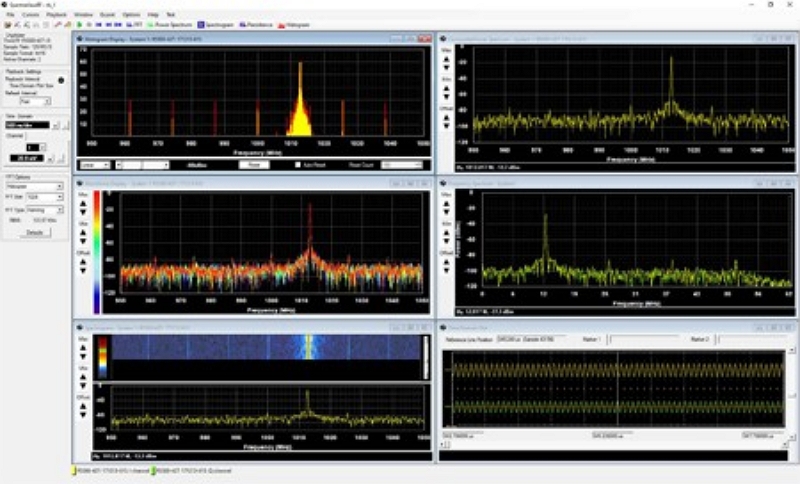RF Downconverter 27 GHz / 40 GHz
Spectrum analysis covering RF frequencies up to 40 GHz
500 MHz instantaneous bandwidth, real-time signal monitoring, and signal recording
Today's high-frequency signal standards use higher frequencies and wider bandwidths than ever before, intended for next-generation 5G wireless services, satellite communications, electronic warfare, and other applications. The RF Downconverter A-40 series meets these new signal standards. It is smaller than the size of a sheet of paper, weighs just 1.7 kilograms (3.7 pounds), and consumes only 20 watts of power.
With an RF input frequency range from 24 GHz to 40 GHz and 500 MHz bandwidth, it spans the high-frequency radio spectrum required for various applications. When paired with GaGe or Signatec digitizers, it can enable effective real-time analysis and signal recording.

The DCA40G RF downconverter features a single fixed IF output at 1.536 GHz with a fixed bandwidth of 500 MHz. It offers 100 kHz resolution, an integrated pre-amplifier, and eight pre-select filters to suppress out-of-band signals and reduce spurious signals. The front-end software-controlled attenuator supports a range from 0 dB to 31.5 dB with steps of 0.5 dB.
The DCA40G is particularly well-suited for mmWave-based 5G applications, as it covers the entire 24 to 40 GHz range specified by the 5G FR2 standard with a maximum channel bandwidth of 400 MHz. Alternatively, the A-27 series DCA08G can cover the lower sub-6 GHz frequency range for 5G FR1 standards, spanning 600 MHz to 4.6 GHz and supporting a maximum bandwidth of 100 MHz. Together, the DCA08G and DCA40G can fully cover the entire 5G spectrum, both sub-6 GHz and mmWave bands.
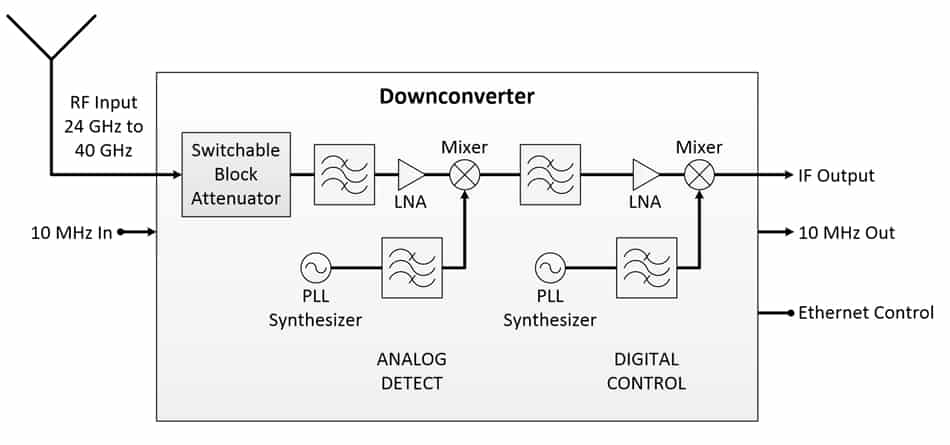
The analog IF output of the DCA40G can be connected to any external spectrum analyzer capable of interpreting its 1.536 GHz IF output with a centered 500 MHz bandwidth for spectrum monitoring.
Alternatively, the analog IF output of the DCA40G can be connected to any RF input from the A-27 series models to effectively provide lower analog IF bandwidth outputs of 160 MHz / 80 MHz / 10 MHz or 100 MHz / 40 MHz / 10 MHz as needed.
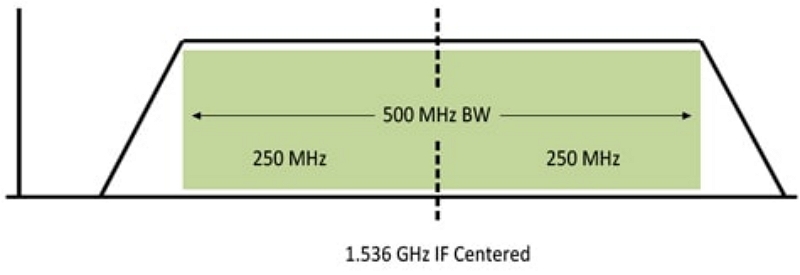
Schematic of the DCA40G connected to an external spectrum analyzer
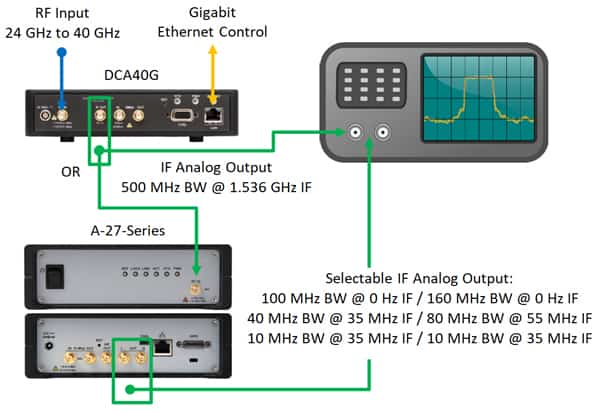
Schematic of the DCA40G connected to an external digitizer (spectrum analysis)
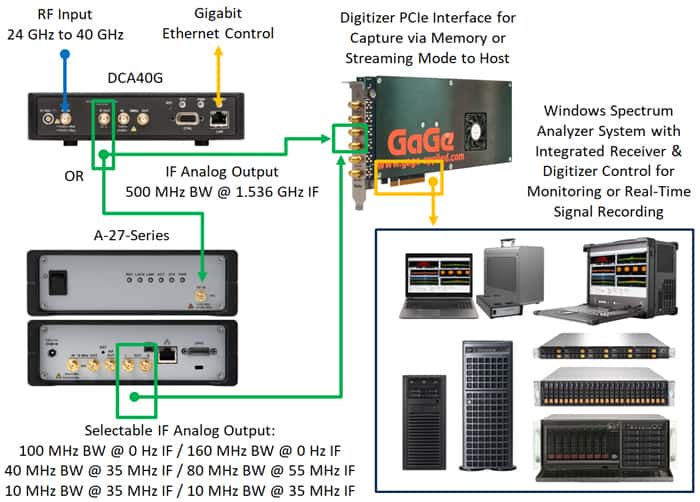
SpectraScopeRT is a Windows-based spectrum analyzer application that requires no programming and allows integrated operation control of the downconverter receiver and digitizer for signal capture, analysis, and recording.
SpectraScopeRT enables saving established configurations to profiles, which can later be reopened and applied, saving time by avoiding the manual reapplication of settings for recurring configurations.
Displayed analysis options include:
IQ time domain, frequency domain, I spectrum, IQ power spectrum, constellation plots, spectrograms, persistence diagrams, histograms
Multiple types of display windows can be opened and shown simultaneously using automatic tiling and cascading options or adjusted manually for size and placement as needed. Display windows support oscilloscope cursors for navigation and measurements within the displayed data, while cursor tracking mode can be enabled to lock the positions of two placed cursors. When locked, the spacing between cursors remains consistent as data moves within the display.
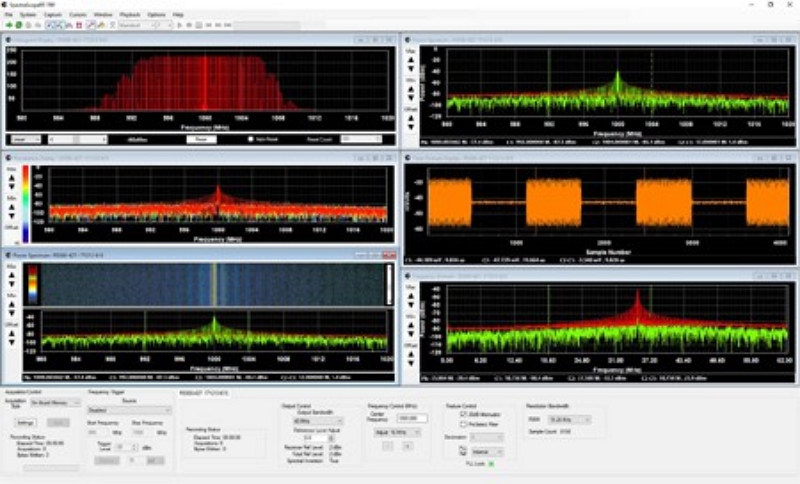
SpectraScopeRT supports both onboard memory mode and streaming operation mode. Onboard memory mode supports all full bandwidth modes of the downconverter receiver. During Onboard Memory mode operation, data snapshots are captured instead of continuously collecting all real-time data. The snapshot rate depends on the number of active display plots, the number of samples per snapshot, the performance of the graphics subsystem, and the local processor’s capabilities. Typical update rates are between 10 and 30 times per second.
The SpectraViewRT application allows operators to open and review previously recorded signals and replay them on display monitors for analysis. It provides essential information about the recordings, including the digitizer model, receiver model, recording settings, and total elapsed time of the recordings.
